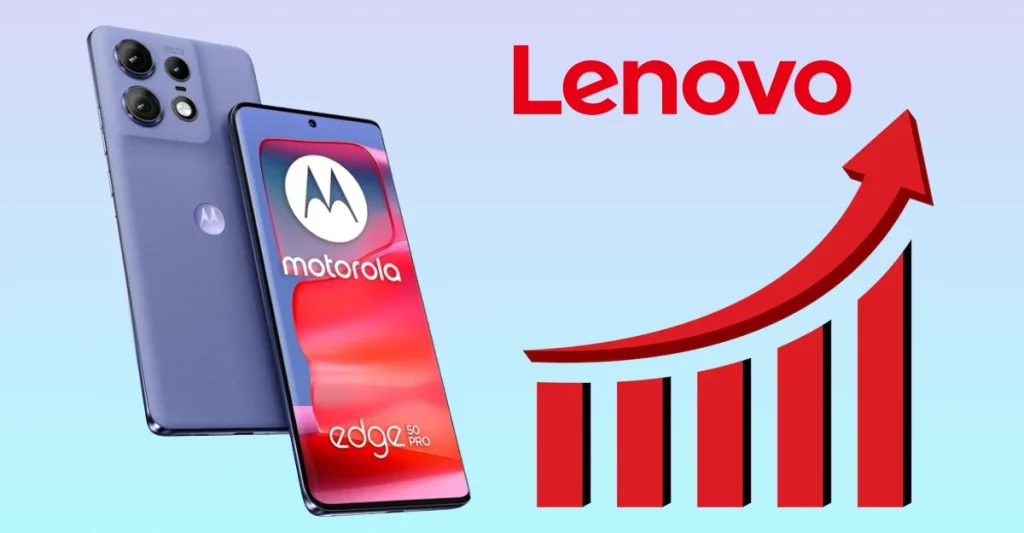Once upon a time, Motorola was a giant in the mobile phone industry. If you remember the early 2000s, you’ll recall the iconic RAZR flip phone. Motorola was the name that defined cool and cutting-edge mobile technology. But guess what? Things took a sharp turn including frequent ownership changes. So, what happened to Motorola? Was there any improvement in Motorola after being acquired by Lenovo?
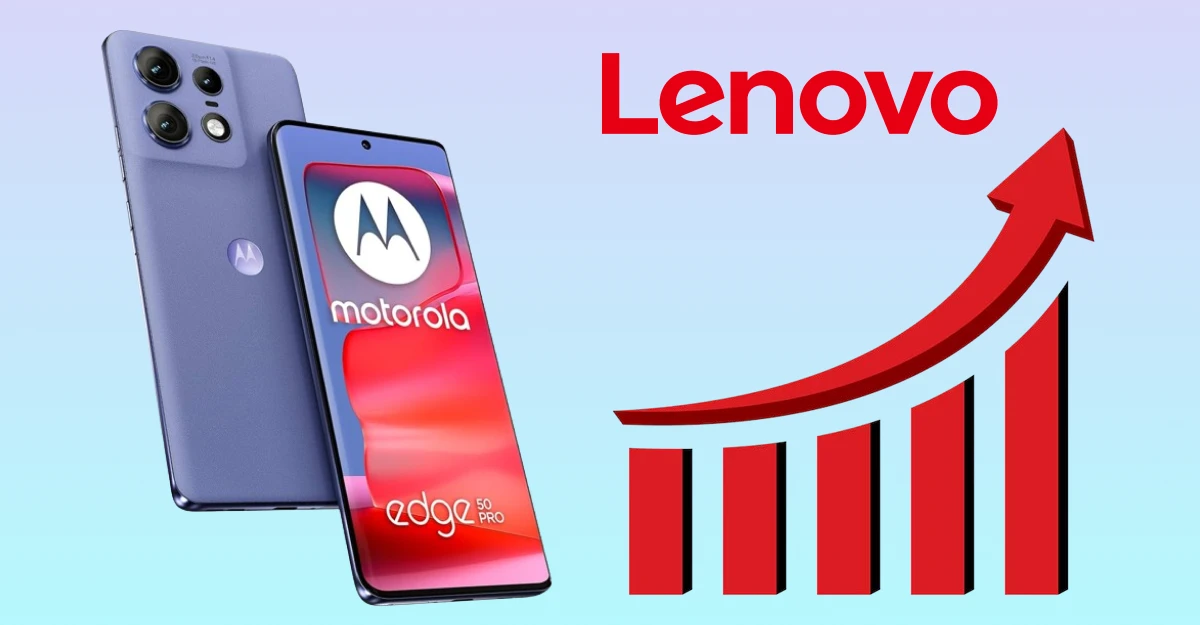
Let’s find out!
(A) What happened to Motorola?
Motorola, once a giant in the mobile phone industry, has a story that’s both fascinating and a bit sad. At one time, this company was at the forefront of mobile technology, but over the years, it faced a sharp decline.
Here we will discuss what exactly happened to Motorola and why it struggled to keep up with the competition-
(A.1) The Golden Era of Motorola
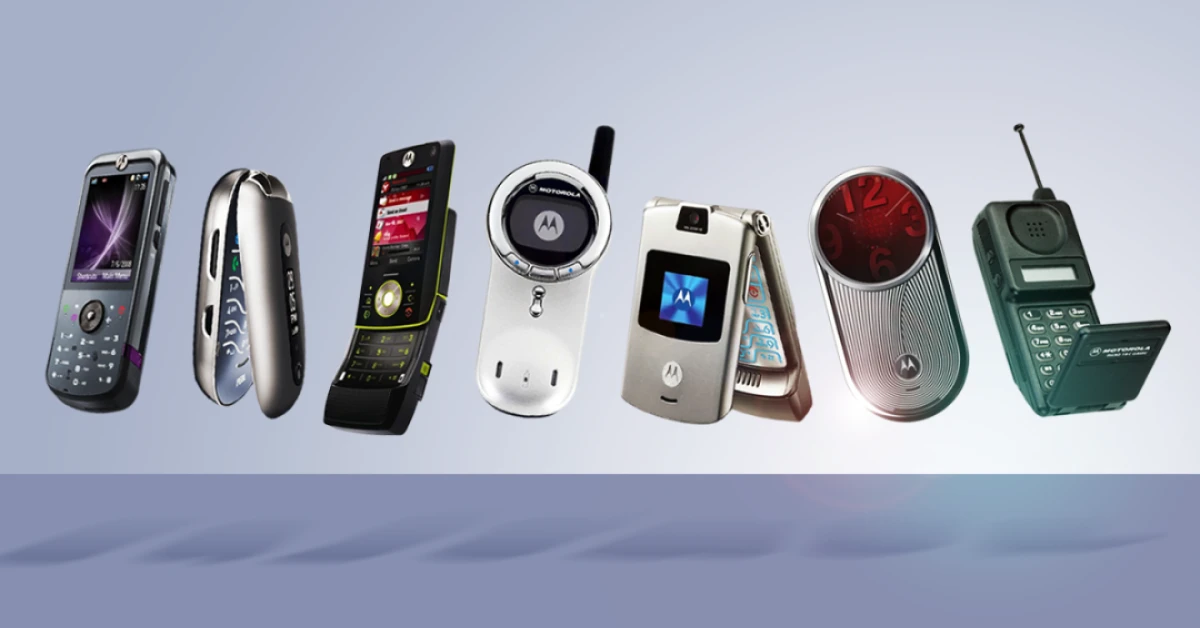
You know, back in the early 2000s, Motorola was a big name in the mobile phone market. Remember the iconic RAZR flip phone? It was sleek and stylish, and everyone wanted one. Motorola was the king of hardware technology, and its devices were everywhere.
But, guess what?
The technology landscape was changing fast.
(A.2) The Rise of Smartphones
By the mid-2000s, the mobile phone industry was shifting gears. Software started becoming the driving force behind the latest innovations. Touchscreens and apps were the new buzzwords, and companies were racing to develop smartphones that could do more than just make calls and send texts.
However, Motorola missed the memo.
While competitors like Apple and Samsung were busy creating ecosystems with user-friendly software and with variety of apps, Motorola stuck to what it knew best- hardware.
Their phones, which once seemed cutting-edge, began to look clunky and outdated compared to the sleek designs and capabilities of the iPhone, which launched in 2007 and changed the game entirely.
(A.3) Motorola’s Struggle to Adapt
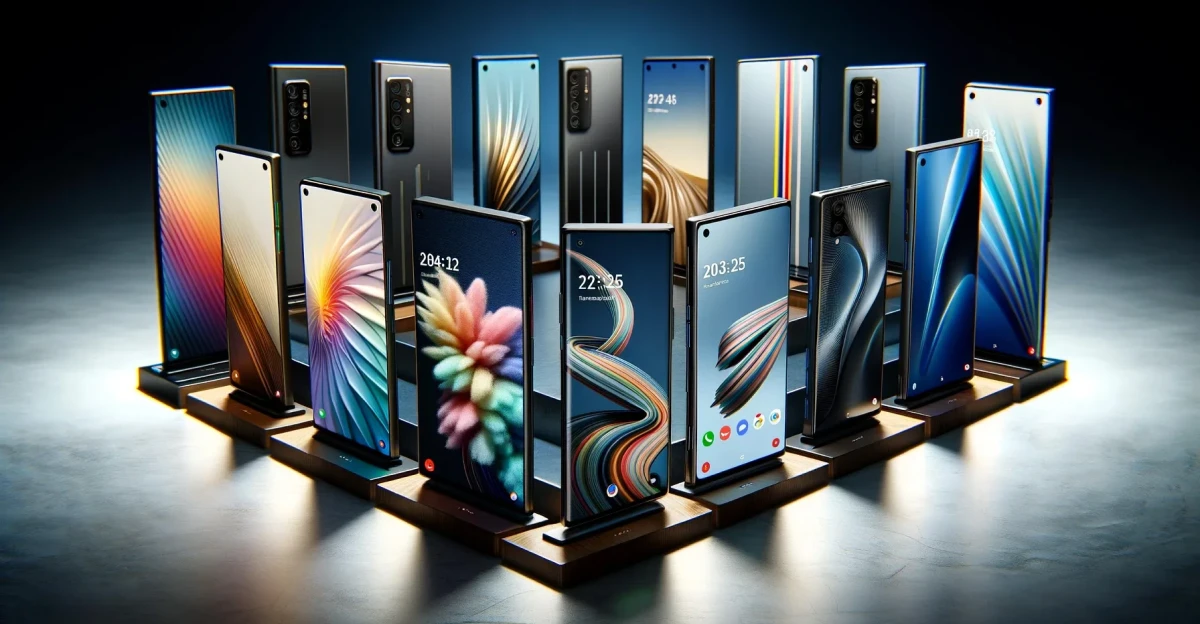
Motorola did make attempts to enter the smartphone market. You might remember the Motorola Droid. It was their effort to catch up with the competition. But, to be honest, the reception was lukewarm. Consumers found Motorola’s smartphones lacking in the user-friendly software and wide app selection that made the iPhone and Android devices so appealing.
This inability to adapt quickly enough was a major blow.
As the smartphone market exploded, Motorola’s market share plummeted. They were no longer the go-to brand for mobile technology, and this decline was steep and swift.
(A.4) Ownership Changes and Integration Challenges
Things took a dramatic turn in 2011 when Motorola, Inc. split into two separate companies-
- Motorola Mobility
- Motorola Solutions.
Motorola Mobility, which focused on mobile devices, was soon acquired by Google in 2012 for a whopping $12.5 billion. Sounds like a game-changer, right? Well, not quite.
(A.5) Google acquired Motorola- in 2012
Google’s main interest was Motorola’s extensive patent portfolio, which they wanted to use to defend Android against potential lawsuits. Integrating Motorola into Google’s ecosystem proved challenging. There were mismatches in corporate cultures and strategic priorities. Google couldn’t quite get Motorola to align with its vision, especially when it came to hardware development.
(A.6) Lenovo acquired Motorola- in 2014
Then, in 2014, Google sold Motorola Mobility to Lenovo for $2.91 billion. This frequent change in ownership didn’t do Motorola any favors. Each new parent company brought its own set of priorities and strategies, creating a lot of uncertainty and instability. Merging with Lenovo was particularly tough. Differences in corporate culture and management styles made it hard for Motorola to find its footing.
(A.7) The Impact of Instability
These ownership changes and the resulting integration challenges disrupted Motorola’s product development cycles and marketing strategies. It was like trying to drive a car while constantly changing drivers – you can’t maintain a steady course. This instability hurt customer relationships, and it became difficult for Motorola to compete effectively in a rapidly evolving market.
Motorola’s inability to maintain a consistent direction meant that they were always playing catch-up. While Apple and Samsung continued to innovate and capture market share, Motorola struggled to stay relevant.
Note: Motorola is not the only one to face such a drastic failure. Blackberry has a similar journey too! We have explained it thoroughly here- “Why did Blackberry Shutdown? The rise & fall of black titan.”
(B) How did it all go wrong with Motorola?

Now, we will explore the key factors that led to Motorola’s downfall, from its struggle with software to its frequent ownership changes-
(B.1) The Shift from Hardware to Software
You know, back in the mid-2000s, the mobile phone business started to shift gears. Software became the driving force behind the latest innovations, and this was where Motorola struggled. Historically a hardware technology company, Motorola found itself outpaced by competitors who were focusing more on software.
Motorola’s phone interfaces were often seen as clunky. Unlike its rivals, Motorola dithered between using Linux and Windows-based operating systems for its smartphones, leading to inconsistency.
Products like the Motorola Q, a Blackberry-like smartphone with a QWERTY keyboard, didn’t fare well against the competition. Then, in 2007, the Apple iPhone came along and revolutionized the industry by transforming the mobile phone into a pocket computer.
(B.2) The Rise and Fall of Motorola Mobility
In 2009, under CEO Sanjay Jha, Motorola tried to refocus by producing Android phones. They launched the Droid phone range, which US telco Verizon picked up.
Guess what?
The Droid sales exceeded those of the iPhone in the US for a while, which caught Google’s attention.
As told adobe, in 2011, Motorola split into two entities- Motorola Mobility, focusing on consumer devices including mobile handsets, and Motorola Solutions.
Motorola Mobility was sold to Google for $12.5 billion in May 2012. Google’s primary interest was in Motorola’s manufacturing capabilities and its extensive patent catalog.
Under Google’s ownership, Motorola released the Moto range of smartphones. The entry-level Moto G was particularly well-received, capturing 6% of the UK market share in February 2014. However, the high-end Moto X didn’t perform as well, and US manufacturing was eventually moved to China and Brazil.
(B.3) Decline in Market Share and Financial Struggles
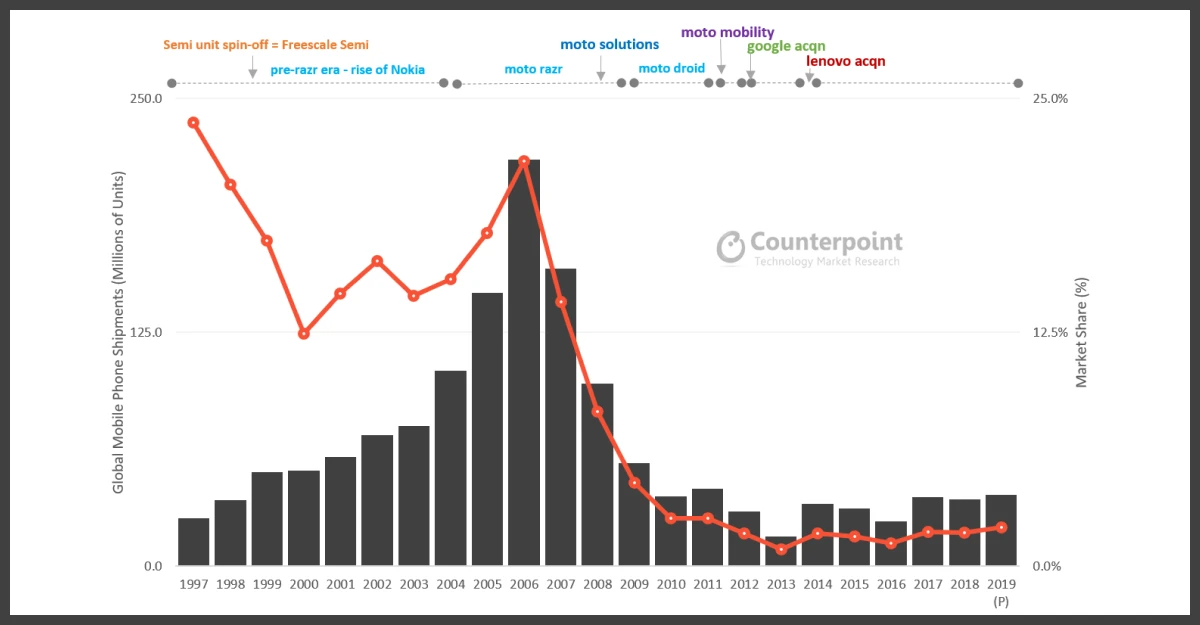
Even with Google’s backing, Motorola Mobility’s global market share continued to decline. By 2014, Motorola held only about 1% of the global mobile phone market, though it had a stronger presence in the US with around 6.8% market share. Despite some successful products, the company faced ongoing financial losses.
This situation led Google to sell Motorola Mobility to Lenovo for $3 billion in late 2014. For Lenovo, this was an opportunity to gain a foothold in the US market with an established brand. But even under Lenovo’s ownership, Motorola struggled to regain its former glory.
(B.4) The Final Chapters
The frequent changes in ownership and strategic direction led to instability within Motorola. The company couldn’t maintain a consistent focus, and this instability hampered its ability to compete effectively in the fast-evolving smartphone market.
Eventually, Motorola’s iconic brand faded into the background. While it seemed for a while that Motorola would live on under Chinese ownership, the company that had given us the mobile phone and so many world firsts ended up being passed from one owner to another. This once-mighty brand was finally merged out of existence.
(C) How Lenovo led its success pivot?
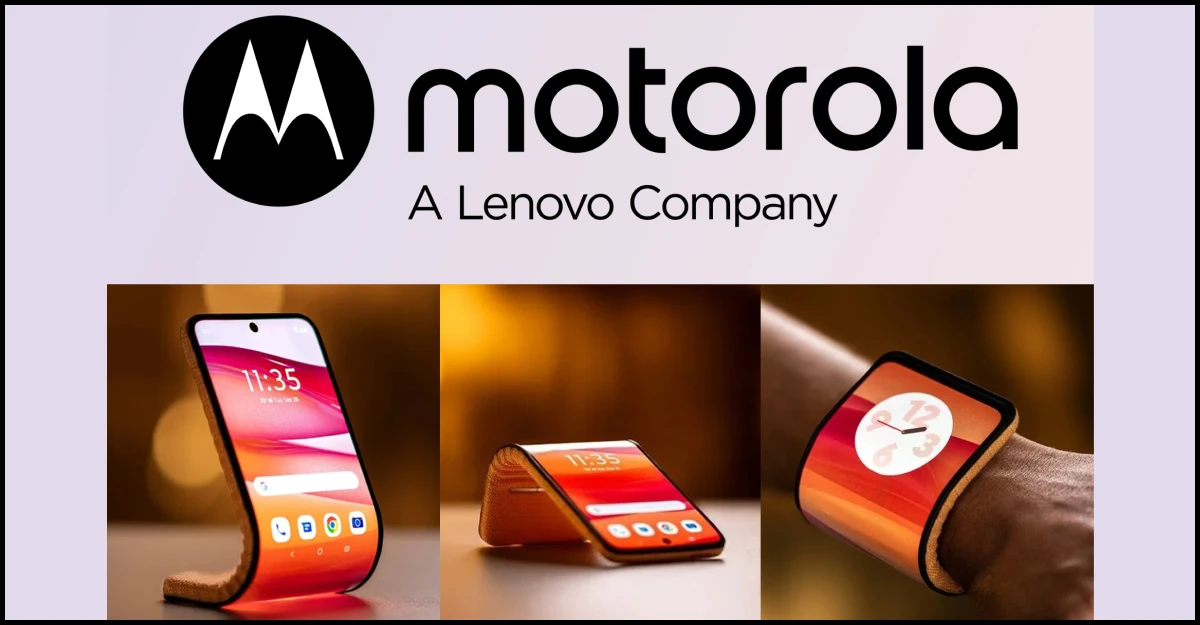
Lenovo’s journey with Motorola is an intriguing one. When Lenovo acquired Motorola, they had to navigate a challenging landscape and make strategic moves to rejuvenate the brand. Here’s how Lenovo worked towards leading a successful pivot with Motorola-
(C.1) Maintaining a Hands-Off Approach
You know, when Lenovo took over Motorola in 2014, they decided on a “hands-off” approach regarding product development. Instead of immediately making drastic changes, Lenovo merged its existing smartphone division into Motorola Mobility in 2015. This move aimed to leverage Motorola’s strong brand recognition and technology.
(C.2) Leveraging Brand and Technology
Guess what? Lenovo saw potential in Motorola’s established brand and technological expertise. They aimed to expand their global presence by building on these strengths. One smart move was continuing practices that Motorola adopted under Google, such as using nearly “stock” Android.
This decision was a hit among users who preferred a clean, unaltered Android experience. Additionally, Lenovo undercut competitors’ pricing while offering superior hardware, which helped them attract cost-conscious consumers.
(C.3) D2C (Direct to Consumer) Selling
Lenovo also focused on direct-to-consumer selling of unlocked phones in the US market. This approach allowed them to bypass carriers and reach consumers directly, offering more competitive prices and flexibility. By doing so, Lenovo aimed to strengthen Motorola’s position in the highly competitive smartphone market.
(C.4) Challenges in Market Share and Software Updates
Despite these efforts, Motorola’s market share continued to decline. One significant challenge was maintaining timely software updates and support. Even though Lenovo stepped up efforts with the popular Moto G line, there were growing concerns about the company focusing too much on new products like the Moto P30 and One Vision instead of improving existing phones.
(C.5) Striking a Balance
Lenovo faced a delicate balancing act. On one hand, they needed to innovate and introduce new products to keep up with market trends. On the other, they had to ensure that existing products received the necessary support and updates to satisfy current users. Successful turnarounds often require time, and Lenovo needed to maintain a focused and consistent strategy to restore Motorola to its former glory.
(C.6) Lenovo’s Consistent Strategy
To succeed in the long run, Lenovo had to stay committed to a clear strategy. They needed to build on the Moto G line’s success while addressing the concerns around software updates. By balancing innovation with support for existing products, Lenovo aimed to create a loyal customer base and regain market share.
(D) Final Words
There you go. Lenovo’s efforts to lead a successful pivot with Motorola involved leveraging the brand’s existing strengths, maintaining a hands-off approach initially, and focusing on competitive pricing and direct-to-consumer sales.
However, challenges in maintaining market share and software support proved to be significant obstacles. For Lenovo to truly revive Motorola, they must strike a balance between innovation and sustaining existing products, ensuring a focused and consistent strategy that meets consumer expectations.
By the way, what do you think- Can Motorola rise again or remain a shadow of its past? Feel free to share your thoughts in the comments section.
Thanks for reading 🙂

